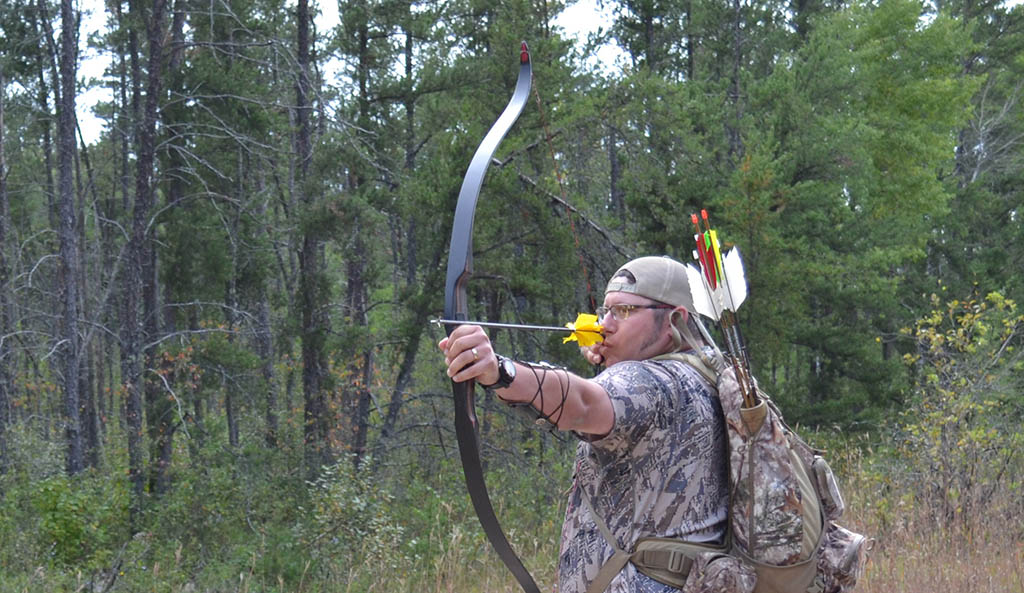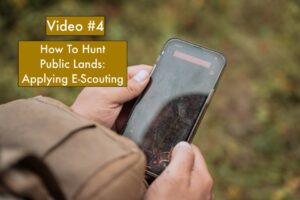
Opening day for Grouse is an exciting time around these parts. These amazing little birds are delicious, fun to hunt and easy to find… for most upland hunters. For my brother in law and myself they are a near invisible bird that is on par with the Unicorn in the amount of sightings we generally experience on an opening day hunt.
On the lead-up to season opener we exchange breathless phone calls, a flurry of texts and many planning sessions perusing upland hunting websites and tip articles. We have topographic maps and satellite images of the areas we think are “grousey”, and we start copying out recipes that will highlight the delicious, mild and tender meat that we are surely going to be blessed with after the opener.
After years of preparing like this, I now include a Coleman stove and pack a dinner so we don’t actually starve to death.
This past opener my brother in law who for the sake of anonymity we’ll call Josh and myself made our usual plan. We studied maps of the Sandilands Provincial Forest area that we planned to hunt and set out to try to break the curse that has befallen us on past opening days. As usual and befitting to tradition, we struck out.
At this point I suspect that Josh, who works for the City of Winnipeg has been cursed by Gypsies who have lost a family member to one of our great city’s expansive and numerous pot holes. Instead of an ending similar to Stephen King’s book Thinner, where the protagonist turns into what is essentially a walking skeleton, we’ve been cursed with unsuccessful openers until long after the earth crashes into the sun.
But we don’t let that stop us…
For Josh and I it has long since stopped being about filling our game bags (despite all the effort we put in preseason), and more about getting out to the woods and hitting reset on our brains. It’s a time for two old friends and now brothers to have a boat load of laughs and try to hone a skill that hasn’t been at the forefront of popularity in the hunting community…traditional bow hunting.
The two main categories that traditional bows fall under when people think of traditional archery are the Longbow and the Recurve. There are many variations and names including self-bows, stick bows, take downs and trads for example. The two I’ll outline here are the Longbow and the Recurve.
The Longbow is quite a bit longer than a recurve with a classic “D” shape when strung. The limbs are slender and the arrow ledge is generally shallow. Due to the nature of its design the longbow is usually a slower shooting bow but what it lacks in speed it makes up in smoothness of draw and less “hand shock” after arrow release. Hand shock refers to the felt vibrations in the grip.
Finally, the Longbow is considered more forgiving to shoot accurately and consistently but is more difficult to shoot from a Tree stand due to their length. I have seen guys consistently hit targets the size of a tennis ball at 30+ yards and many a Whitetail have fallen to the sting of a well-placed arrow from a Longbow despite their length and difficulty to maneuver in the woods.
The Recurve bow is a faster shooting cousin of the Longbow with some notable differences in appearance. Firstly, the limbs on a recurve are flat and wider than that of the Longbow. Second, where the Longbow maintains its “D” shape when strung, the limb tips of a recurve bend forward past the grip. This shape allows the bow to be shorter and pack more power into its design.
The short stature of most Recurves allows them to be shot from a tree stand easily as well as from the cover of a ground blind. The Recurve is generally more challenging to shoot because it is easier for archers with poor form to torque the string, bringing it off the centerline and affecting accuracy…so of course I shoot a Recurve.
Being that I have decided to make things even more difficult for myself by shooting a Recurve bow I use arrows known as flu flu’s and small game heads. For those of you not familiar with flu flu’s, they are similar to a regular arrow in that the shaft is the same. The feathers that make up the fletching, however, are significantly larger and aid in slowing down the arrow so that if one misses their intended target the arrow isn’t lost.
I have much experience with missing targets so my quiver is full of flu flu’s and they are my go-to for small game and upland hunting.
I should mention that flu flu’s will also fly out of a compound bow so if you are a fan of the wheel bow you can absolutely hunt small game and probably with greater success than me with my traditional bow!
Small game heads come in many different styles but my personal favourites are the G5 S.G.H. (small game head). They are devastating on small game and super tough so they can withstand even the worst shots. I have bounced these heads off of everything from hardwoods to the occasional hunk of granite and they have never broken on me.
While my traditional bow hunting abilities are at best – lackluster, I am a hard headed and persistent son of a gun and have the hopes of one day ethically harvesting big game with my recurve. This was the reason that I have started hunting grouse and small game exclusively with my recurve.
Beyond spending time at the range, hooking up with a great instructor – which there is many of here in Winnipeg – is a great way to improve. Jason Sweet down at Heights Archery immediately leaps to mind. If you are seriously considering bow hunting, call him or one of his compatriots down at the shop, they’ll get you shooting straight faster than watching a couple YouTube videos ever will! Once you are set up, one of the best ways to practice with your bow is to get out and go on a grouse walk.
There is an added benefit to the grouse walk that rivals any 3d shoot or competition – an opportunity to stump shoot. Stump shooting is as exactly what it sounds like. As you walk the woods, you take aim and let arrows fly at various stumps, at varying distances. This is an excellent way to wean off of the range finder and become adept at accurately gauging distances on the run.
I like to make a game of stump shooting. The bet is usually a million dollars per stump but it seems that the winner never gets paid so recently we’ve dropped the price to a nickel. When reality hits that we’re likely skunked for small game the call goes out: “A million bucks says you can’t hit that rotten stump!” The challenger will point out the stump and the challenged then argues about which stump they’re supposed to be shooting. “What that one there with the big knot in the bark?” “No the fallen birch at 30 yards to your left.” “My left?”, “No My left!” and so on until an agreement is reached.
If the shooter hits the target, they win a nickel and then get to pick the next stump. The game can range from 5 yards to whatever distance you are hoping to shoot at. It is an amazing way to spend a morning in the woods.
Places like Sandilands Provincial Forest, Mars Hills, and really any forested crown land are great places to go after small game like grouse when the season is open or for rabbits at any time. The gear you need to carry is light, I usually only pack a small day pack with water, the basic survival stuff you should be carrying in to the woods on any occasion you go hunting, and a knife.
Despite what the picture above may lead you to think, I don’t believe camo is really necessary for hunting upland and the stumps don’t seem to flush no matter how loud you are so wear comfortable, weather appropriate clothing camo or not. Finally, don’t worry if you don’t see any game, the practice you get from a morning or afternoon of stump shooting will pay off in a memorable day in the woods anyway. Just don’t forget to pack a lunch!
If traditional archery and stump shooting sounds like fun to you and you’d like to give it a try, go and visit Jason down at Heights Archery. His crew will help you select the proper bow, arrows and get you into lessons to ensure you’re in shooting shape to get out in the wilds. Heights Archery, Web: http://www.heightsoutdoors.com, PH: 1-866-261-3542

